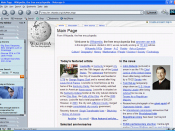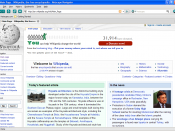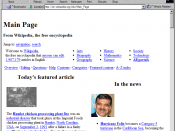Web BrowserIn today's world there is a lot of competition, in the world of technology that statement holds truer than in many other fields. Examples of this competition can be seen by looking at the available web browsers used when accessing the internet.
This competitiveness can clearly be seen between the three major web browser on the market today; Microsoft Internet Explorer, Mozilla Firefox, and Netscape Navigator. At first glance all three web browsers have a generally similar appearance. Each has a back and forward button that is easily accessible and just as easily located. At the top of each web browser some of the more common buttons one can locate are: home, refresh or reload, print, stop, search, bookmarks or favorites, address bar, menu bar, access indicator, status bar and scroll bar. This is where the similarities in appearance end for Microsoft Internet Explorer and both Mozilla Firefox and Netscape Navigator.
Although both Microsoft Internet Explorer and Netscape Navigator are both based on the NCSA Mosaic, which was "the first browserâ¦developed at the National Center for Supercomputing Applications back in the early 1990's (Lerner, M., 2008)" they each have gone very different ways with regards to the appearance and functionality of their design. Mozilla Firefox and Netscape Navigator have more similarities than differences with regards to their appearance and their ability to interact with each other. Scripts that are written for Microsoft Internet Explorer are not so easily compatible with Netscape Navigator or Mozilla Firefox.
Depending on an individual's likes and dislikes with regards to the style and number of toolbars used the appearance of ones web browser page can vary greatly. Typically a user will base their use of a particular web browser over another on the speed and ease of use.
In particular,


